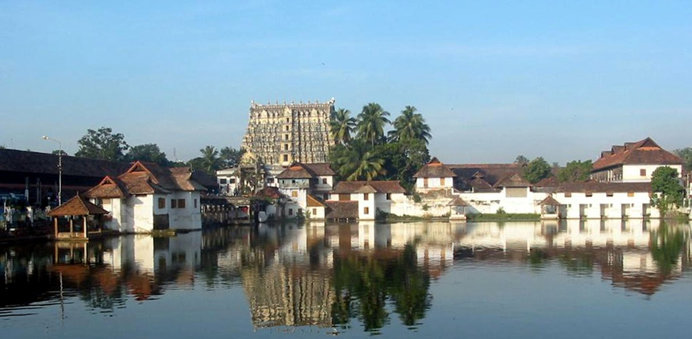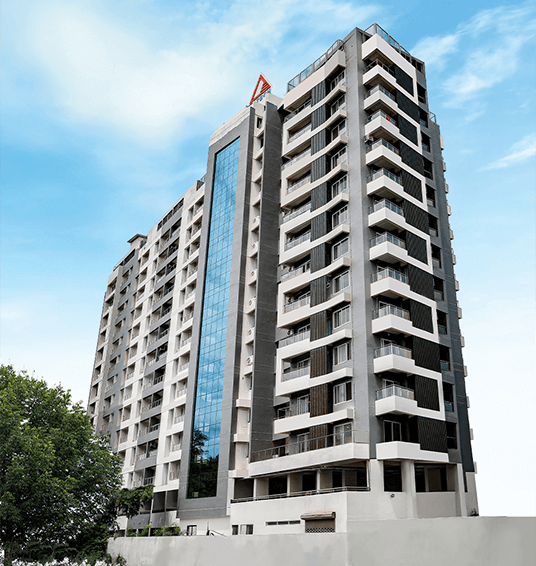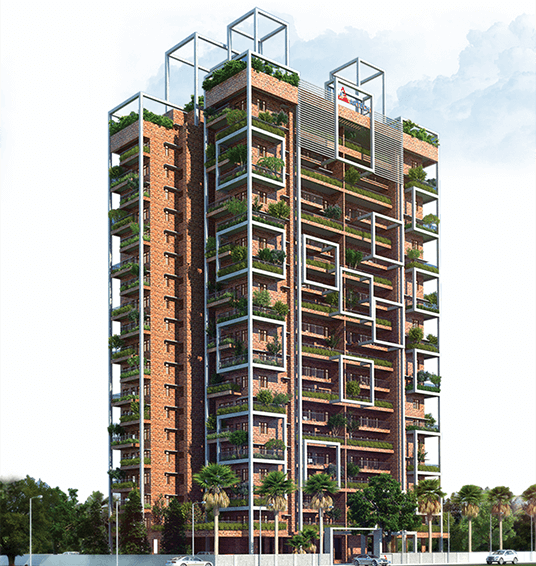
The world famous Sree Padmanabhaswamy temple is located in Trivandrum, Kerala and is known as the world’s richest Hindu temple with assets worth over $22 billion dollars in gold and gems! The earliest reference to this temple in historical literature was in 500 BD when it was described as ‘The Golden Temple’ and a ninth century poet-saint even described it as ‘heaven’! Legend has it that this temple was built five thousand years ago on the first day of ‘Kali Yuga’. It’s a magnificent and marvelous piece of architectural beauty worked into stone and bronze, with ancient works of arts including mural paintings and wood carvings. The architecture is an intricate fusion of the indigenous Kerala style and the Dravidian style.
The temple’s Gopuram is designed in such a magical way that during summer equinox, the sun goes down exactly through the middle of the Gopuram, with the golden rays radiating out through the middle doors, passing exactly through the structures’ center! It’s an absolute must-see miracle that’s so well constructed. An architectural marvel indeed especially for those jaded- minded ones who believe that only modern technology use can produce such amazing feats. The Gopuram is seven stories high and is built on the eastern entrance of the temple. The architecture is solely Dravidian in style and the 35 meters high Gopuram has seven golden domes built on top of it, depicting the seven worlds. The 10 incarnations of Lord Vishnu can be seen inside the first level of the intricately carved structure of the Gopuram. Sadly, the remaining six levels are restricted to the public. There is another underground level which is known as the ‘nataka Sala’ and it is here that the traditional ‘Kathakali’ art forms are staged during the annual ten day temple festival.
There are three entrances to the temple that are double-storied Padippuras built in the typical Kerala style. Totally the temple has nine entrances, representing the nine orifices of the human body.
For those who need to know a little more about the equinox, it is known to occur twice in an year, once in spring, and then again in the autumn, when the earth’s axis is tilted neither towards the sun nor away from the sun. During the equinox, the tilt is zero degrees and because of this phenomenon, the day and night durations are almost equal, that is 12 hours each. The spring equinox occurs either on 20th or 21st of March while the autumn equinox occurs on 22nd or 23rd of September. The term is also used colloquially as the first day of spring or as ‘midsummer’. The spring equinox or vernal equinox is traditionally symbolic of renewal, rebirth and fresh starts. Ancient Christianity tied Easter celebrations with the vernal equinox as it also has to do with the rebirth of Christ.
The traditional Hindu festival of ‘Holi’ is celebrated during this period to mark the victory of good/light over evil/darkness. Interestingly in Japan, both the Equinox days are celebrated as occasions to worship their ancestors. The story gets better in Persia, where people have been celebrating the equinox as the New Year or ‘Nowruz’ since the past 3,000 years!













